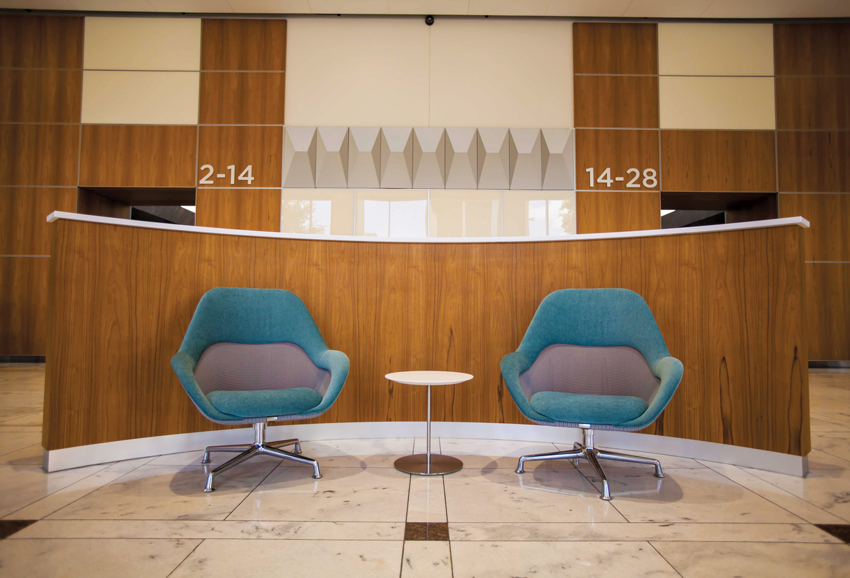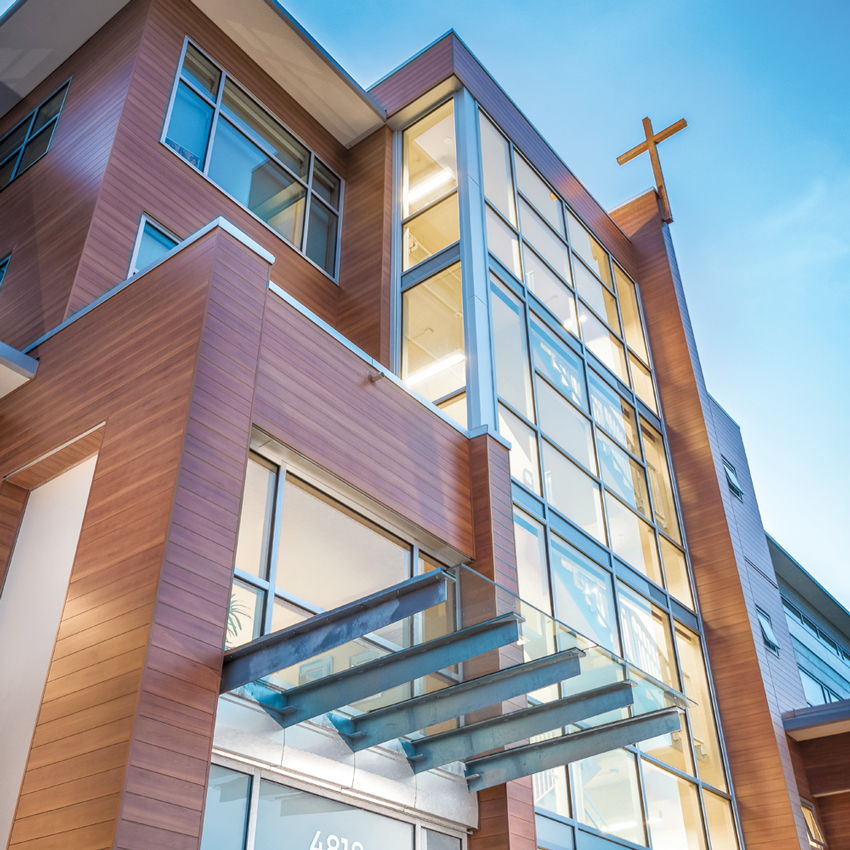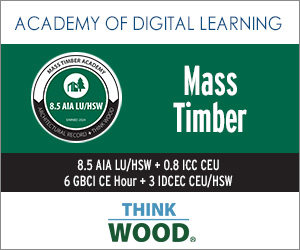First Impressions
ACM in the Mix
Among these assorted choices, aluminum composite material (ACM) panels are a viable option, known for their sleek aesthetic. The once pricey material, formerly relegated to high-end products, is now affordable, thanks to advancements in product technology, manufacturing efficiencies, and installation techniques. In fact, initial construction costs are often lower than some other exterior materials due to a faster installation process.
Good-quality ACM products also incorporate a finish so that the cladding requires virtually no maintenance for as long as 30 years. Other benefits include rainscreen protection and the material’s light weight, supporting reduced structural steel requirements.
A partially recycled material, ACM’s are 100 percent recyclable. If manufactured domestically, they can be sourced to within 500 miles of the installation site, thereby contributing to LEED credits.
While many ACM facades are flat panels laid out in a symmetrical grid, the more trendy designs are taking advantage of the ability to fabricate the panels into 3-D shapes, thereby lending a high-tech, modern look. ACMs can also be bent, curved, and joined together in just about any geometric configuration and are offered in a large assortment of colors and finishes.
In terms of attaching the cladding, manufacturers offer various options, such as a dryseal gasket joint, wet-seal caulked joint, and a painted aluminum finishing cap that covers the panel joints.
For 3-D designs, some fabricators utilize an attachment system capable of thermally isolating the aluminum attachments and panel surface from the building wall, thereby limiting the amount of thermal transfer of energy into the building from the outside.
“Our goal was to create the easiest and least-expensive ACM solution to install, period. Based on the feedback from architects, owners, and installers on 3-D wall panel systems with thermal performance, we feel that we have succeeded,” says Goran Glumac, vice president, Acpexpress, North Bergen, New Jersey.
Because the thermal isolation and insulation capabilities of ACM systems are often a function of the attachment system, these performance capabilities may also be available with flat systems. Some systems can also be fitted with thermal-break pads and insulated channels to further limit the transfer of energy.
A strong example of ACM concave panel ability is exemplified at The Bank of America headquarters in San Antonio where the curved lobby walls mimic the look of wood. With a rectangular attachment profile, the panels easily align across a vertical or horizontal space. The panels also integrate seamlessly into the mixed-material wall and provide a unique aesthetic to the modern design.

Photo courtesy of Cladiators
Featuring aluminum composite concave panels, The Bank of America headquarters in San Antonio presents a wood appearance.
On another project, Pablo M. Ipucha, associate AIA, senior project manager, Gene Kaufman Architect PC, New York City, specified the panels for performance and functional benefits.
“Incorporating ACM panels into our building envelope has benefited us in drastically reducing the width of the exterior wall while meeting the R-value requirements. We were able to add 6 inches of usable real estate to the floor plans all around,” he says.
Faux Wood à la Aluminum
Combining the durability and maintenance of aluminum with the richness and beauty of wood, faux wood aluminum cladding is another viable facade option available to architects.
Exposed to the elements, prefinished aluminum for soffits and siding in particular effectively wards off rot, mold, and the challenges associated with cold weather. Because the color is baked into the material, owners can avoid the issues of flaking, peeling, and warping.
To produce an authentic wood appearance, some wood grain technologies utilize an advanced powder coating system and machinery to manufacture the material. The result is an attractive wood aesthetic without the maintenance hassle and cost associated with wood cladding products.
Showcasing the beauty of faux wood and the benefits of aluminum, John Clark, principal, John Clark Architect Inc., Burnaby, British Columbia, Canada, specified 10,000 square feet of 6-inch, V-groove light cherry aluminum siding and soffit for the John Paul II Pastoral Centre’s Campus of Care in Vancouver.

Photo courtesy of Mayne Coatings Corp.
V-groove light cherry aluminum siding and soffit at the John Paul II Pastoral Centre’s Campus of Care in Vancouver deliver a beautiful wood appearance without the maintenance hassle thanks to aluminum composite material.
While aluminum composite, cementitious plank, and steel cladding were all considered, a wood-grained aluminum siding material turned out to be the best option for its aesthetic compatibility to a wood finish and noncombustibility. Clark was also pleased with the cladding’s no shrinkage and no staining benefits, and the fact that the system he specified utilized a hidden fastening system.
Located in a residential area rich in trees and greenery, the facade’s wood appearance blends in well with the locale.
“The scale and color of the 6-inch plank material, relative to the volume of the wall areas and feature elements, informs and strengthens the relationship of the forested southwest edge of the property, its tall trees and adjacency to the residential neighborhood, and the neighboring health-care facilities,” Clark says.
In particular, the light cherry color was selected for its red tones, creating a nice contrast with the nearby Douglas fir and yew trees.
Sharing some lessons learned from the project, Clark advises building teams to preplan where the boards will be cut to avoid waste, knowing where the expansion channels and flashing details for windows and other openings will be placed, and extensive mockup training for the sub trades before installation.
Notice

www.cladiators.com

www.crl-arch.com/entice

www.extechinc.com

longboardproducts.com

www.newmill.com

www.prodema.com

www.xtremetrim.com

www.keilanchor.com

www.wwglass.com









